BUCKET LIST
Northwest Nebraska is a history buff’s dream. Few areas in Nebraska offer as many state historical sites as those located in Dawes and Sioux Counties. From the wonderfully historic Fort Robinson, early sites of the fur trade in Nebraska, the many significant Native American landmarks, and Chadron State College, there’s something for every history enthusiast to enjoy.
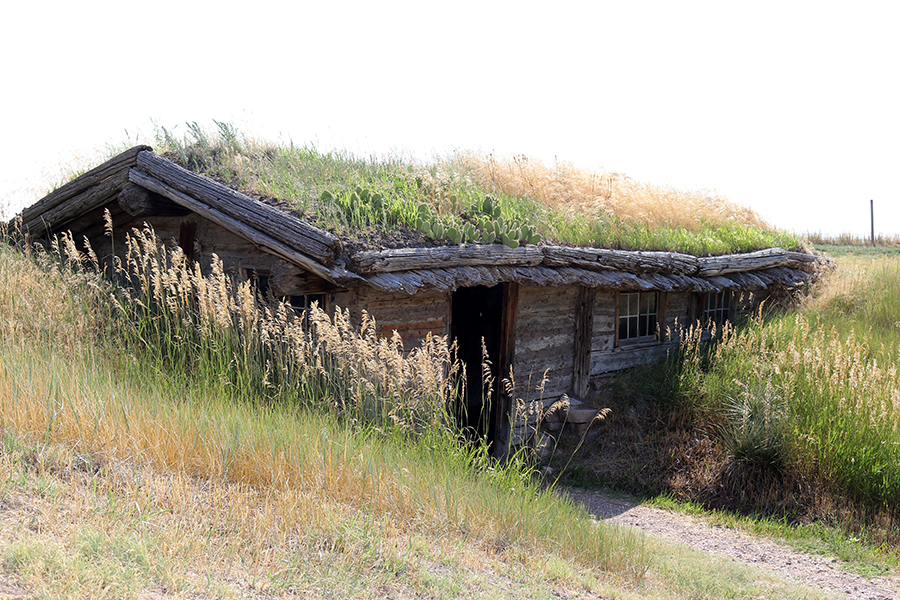
James Bordeaux Trading Post
James Bordeaux’s trading post operated near this site from 1846 to 1872 mostly serving the local Lakota who supplied furs and other goods in trade for guns, powder, blankets and beads.
Though many fur traders of note have ties to Northwest Nebraska, none left their mark as much as Bordeaux.
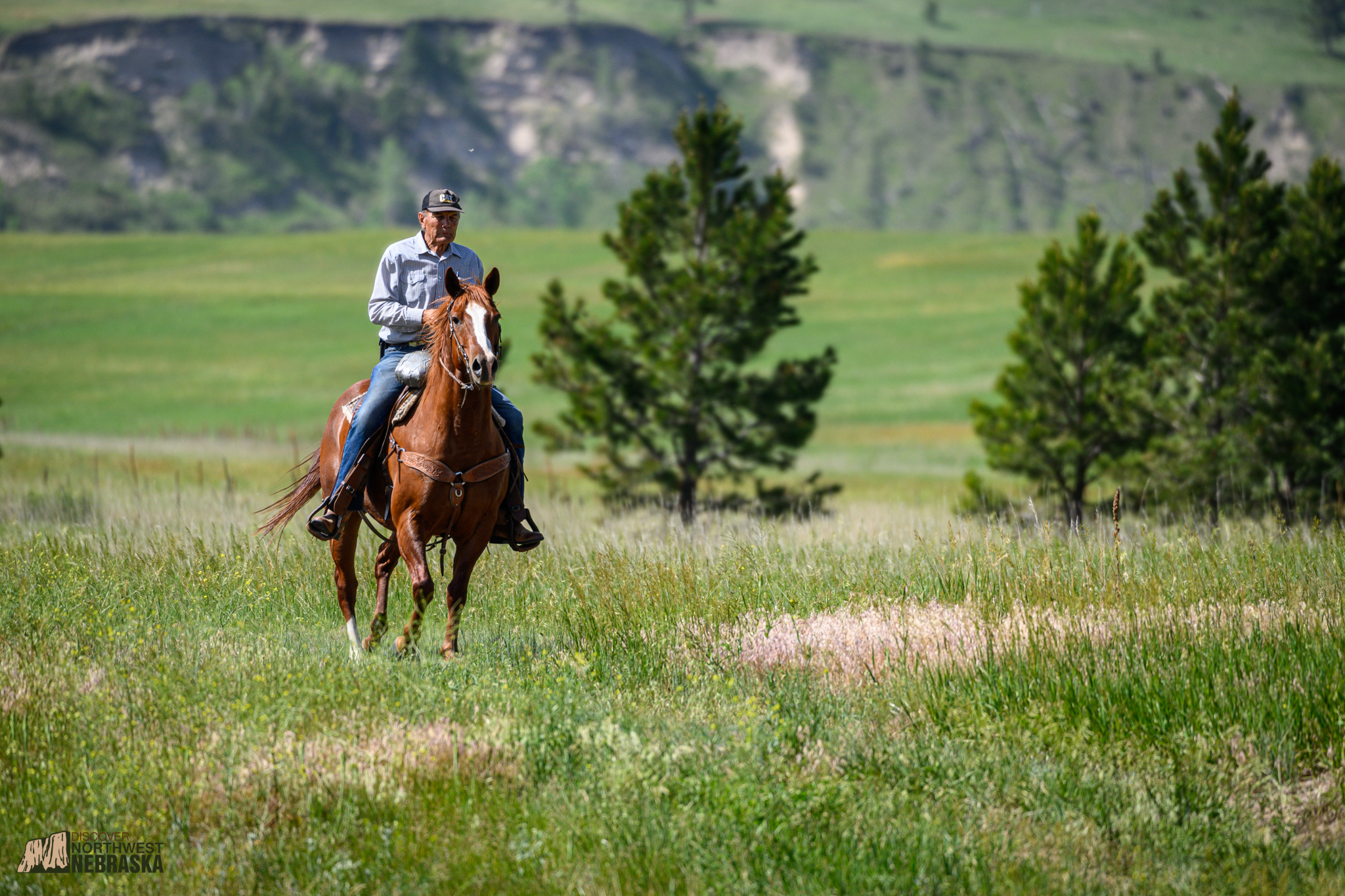
Chadron-Chicago Horse Race
This 1893 race was America’s longest horse race as nine riders competed to be the first to arrive in Chicago after starting at the corner of Second and Bordeaux streets in Chadron.
Congregational Church
The Congregational Church built in 1885 was the first church constructed in the pioneer version of Chadron at 300-398 Chadron Ave.
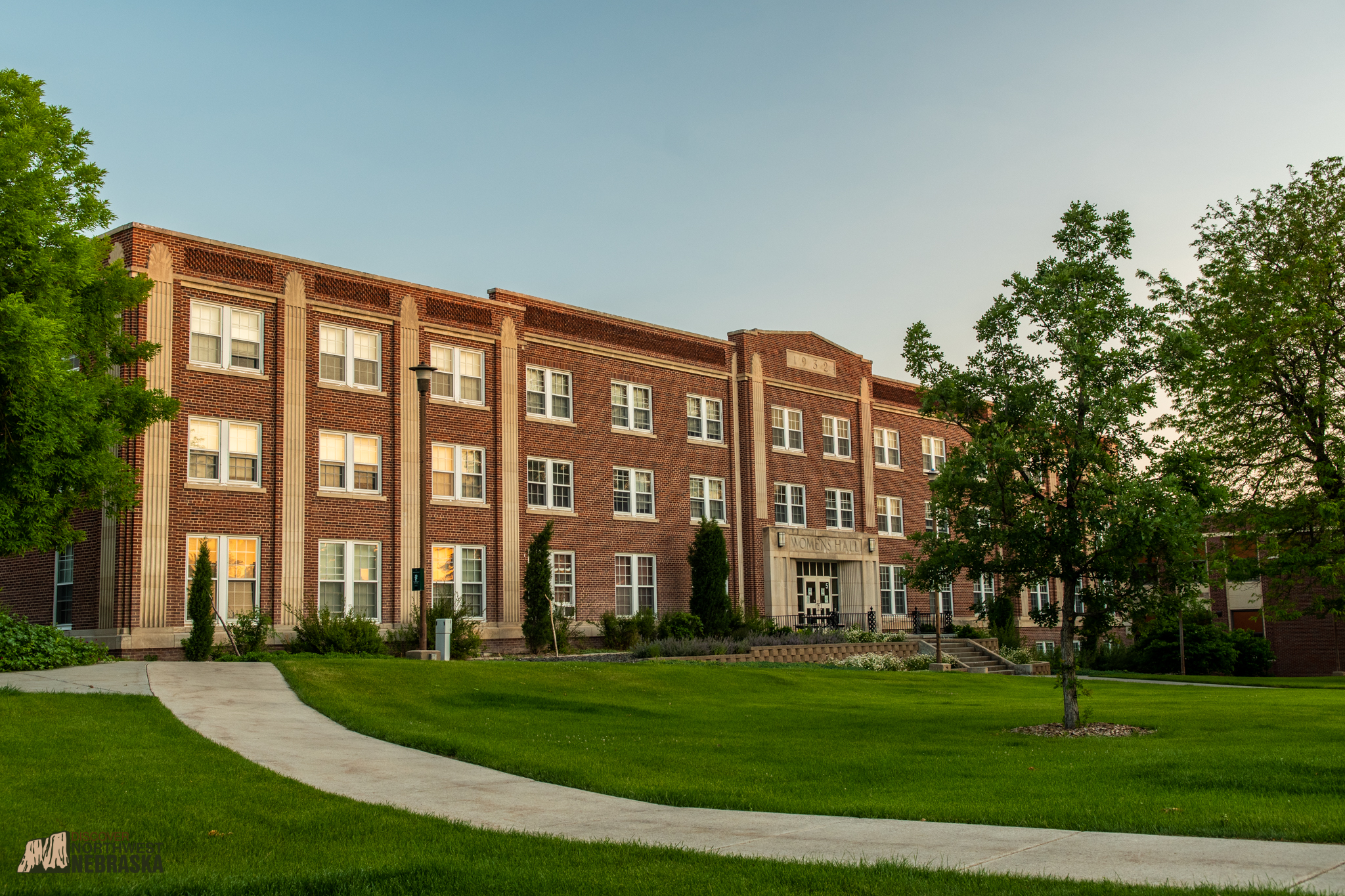
Chadron State College
Chadron State College, at 1000 Main St., was the state’s fourth Normal School. Classes began in 1911.
Fort Robinson-Camp Sheridan-Pine Ridge Indian Agency Road
This road was used to transport military and Indian supplies, and Crazy Horse traveled over it on his final journey to Camp Robinson in 1877, where he was eventually killed. Highway 385
This road was used to transport military and Indian supplies, and Crazy Horse traveled over it on his final journey to Camp Robinson in 1877, where he was eventually killed. Highway 385
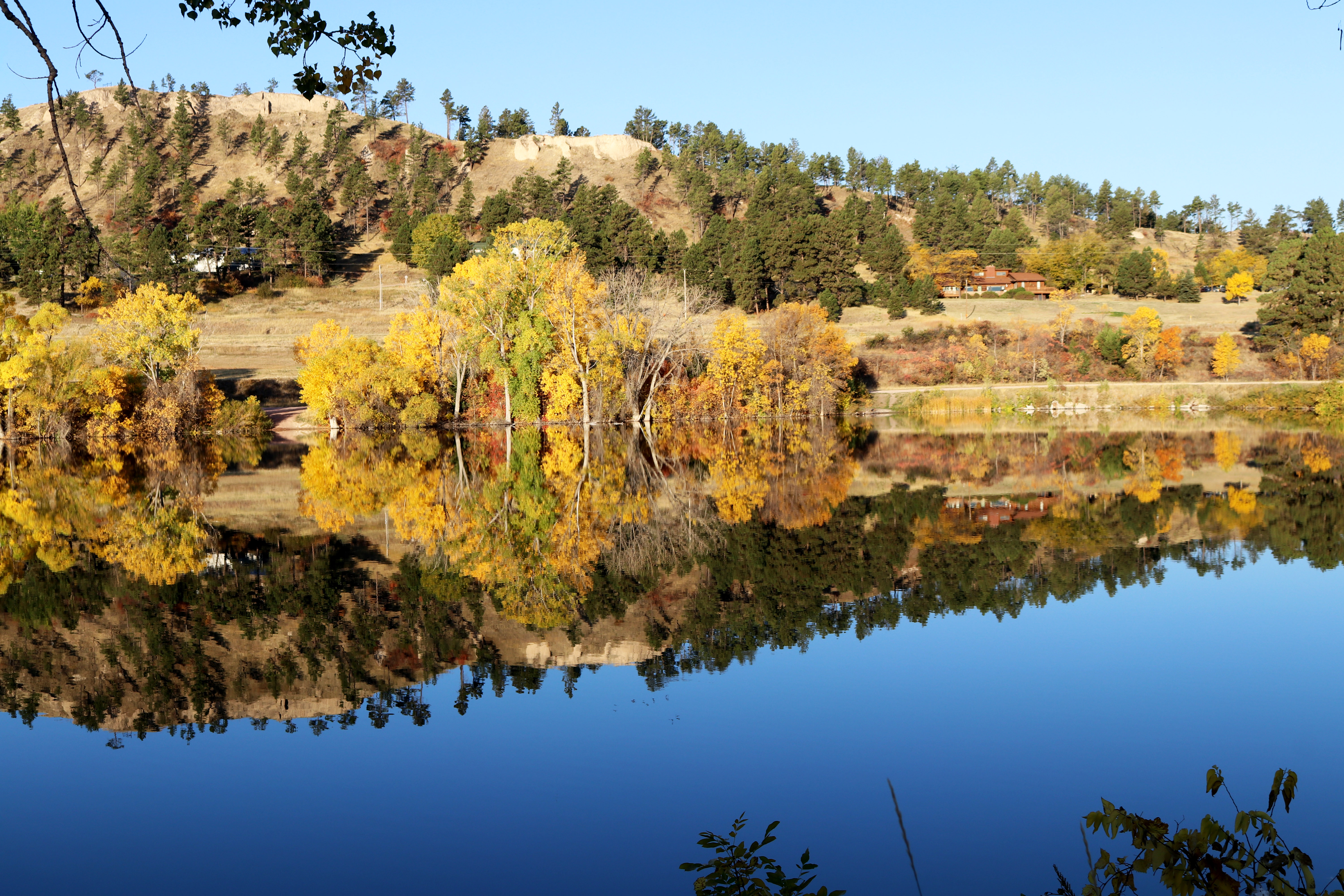
Chadron Creek Trading Post
The trading post on the banks of Chadron Creek was constructed in 1841 to trade with the Sioux. For three years it was operated by Louis B. Chartran, from whom Chadron takes its name.

Chadron State Park
Chadron State Park as Nebraska’s first state park with a legislative act approved April 25, 1921. The bill was introduced by Senator James Good and Representative George Snow, both of Chadron.
Fort Pierre-Laramie Trail
This 300-mile route was used to transport hundreds of thousands of buffalo robes and 27 tons of fur-company-traded goods between 1837-1850. Highway 385.
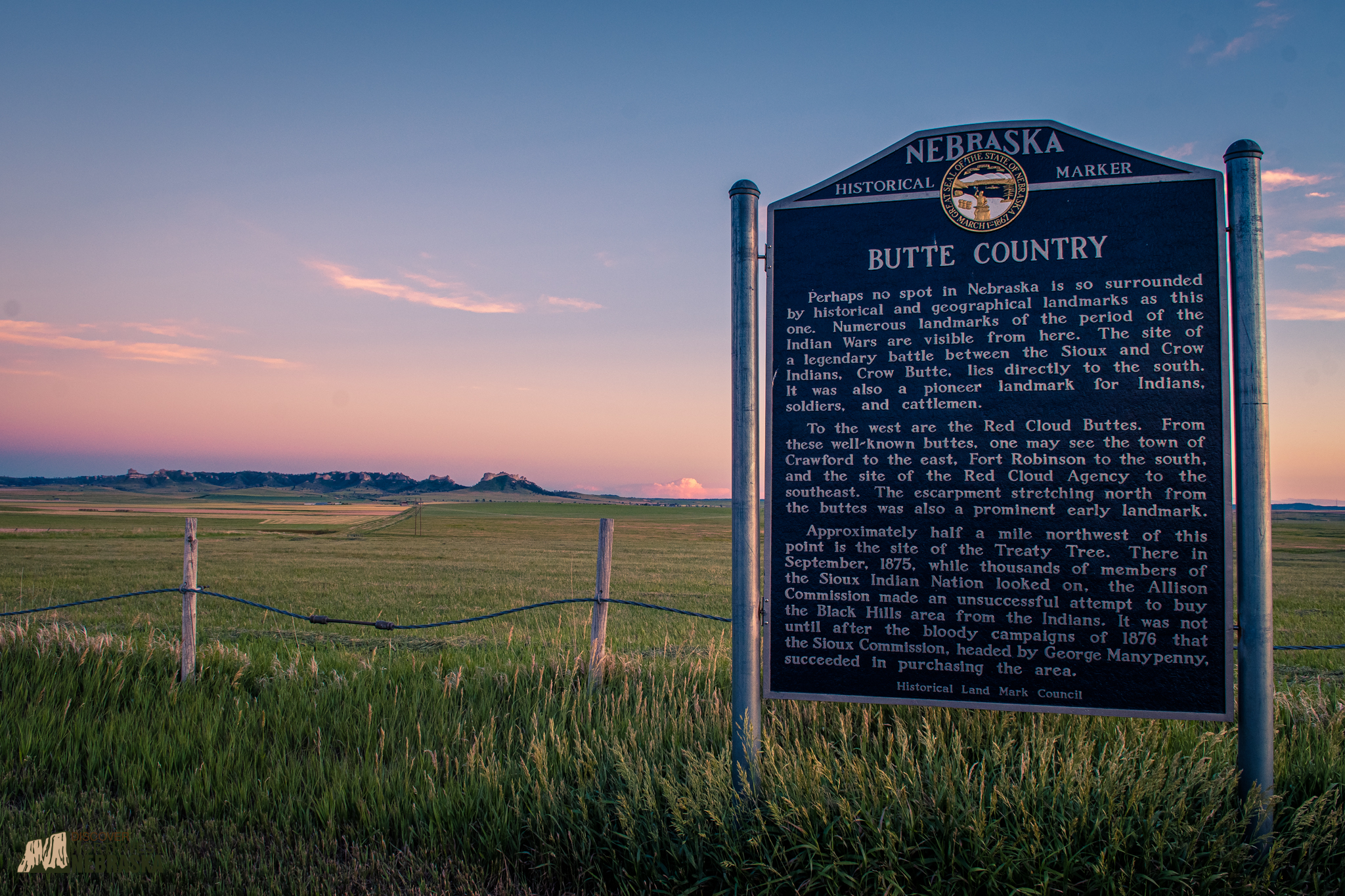
Butte Country
The Pine Ridge’s buttes are some of the most significant landmarks across Northwest Nebraska and served as road signs for early settlers. They were also sites for events like a legendary battle at Crow Butte between the Sioux and the Crow. 3895-3899 US 20, Whitney
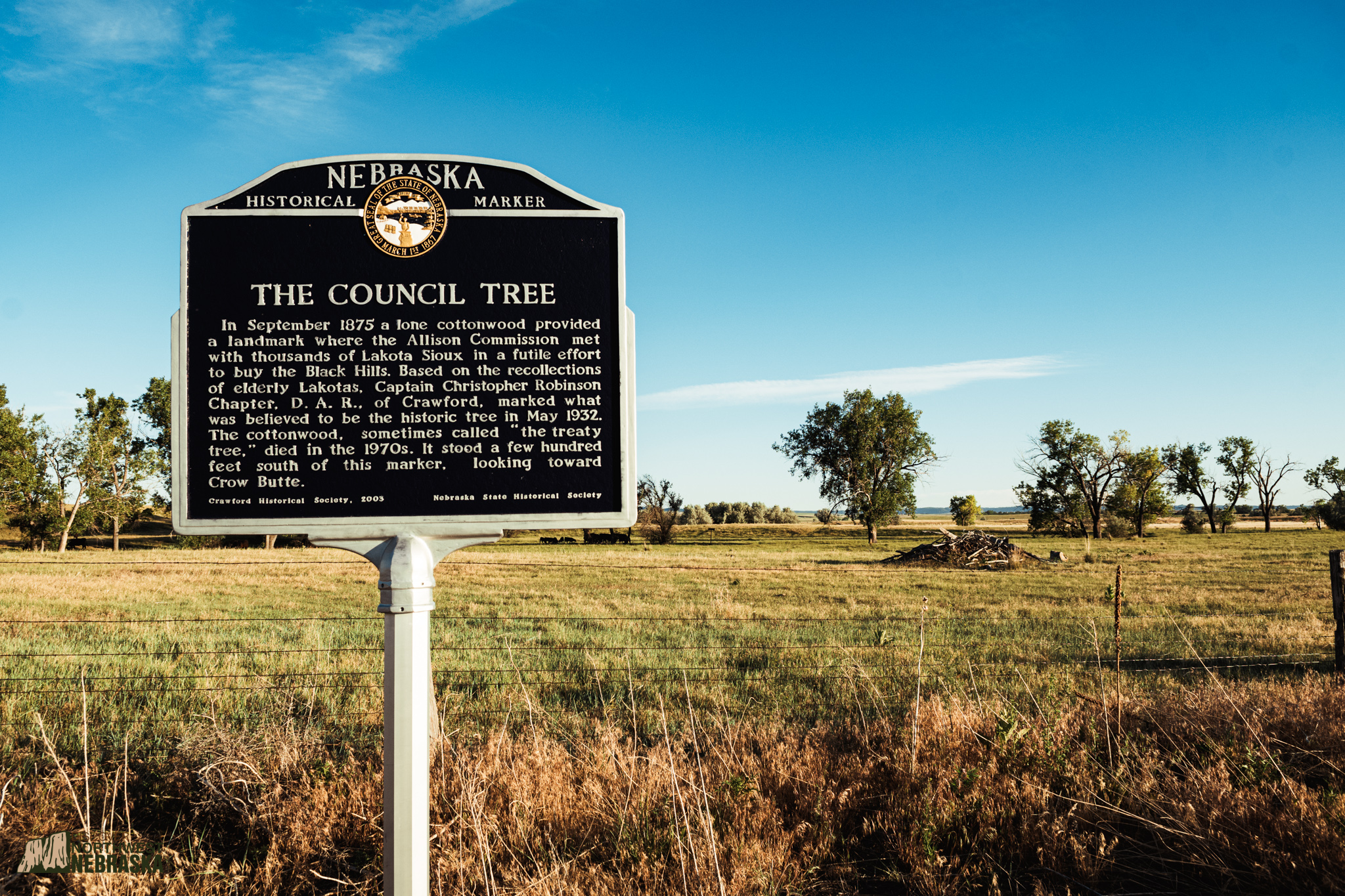
Council Tree
This marker represents the approximate location of the Council Tree where the Allison Commission met with thousands of Lakota Sioux in an effort to purchase the Black Hills in 1875. 500-542 Old Highway 20, Whitney

Crawford
This village started as a tent city in 1886 and was named after a Fort Robinson soldier. Crawford served as an important supply depot and entertainment center for soldiers stationed at the Fort.
1891 School Bell
Crawford’s first high school was constructed in 1890 and this bell was installed in the belfry the next year. It was turned into a monument after demolition of the structure in 1956. Located at 501 Coates St.
Baptiste Garnier
Garnier served as a scout and was killed in the street by a bartender in 1900. 260-298 2nd Street

Fort Robinson
Fort Robinson, established in 1874, would become perhaps Northwest Nebraska’s most prominent landmark. Now a state park, the fort played an important role in the Indian Wars, was the site of Crazy Horse’s death, housed German P.O.W.s during WWII and even housed a War Dog Training Center.
K-9 Training Area
In September of 1942 the Fort Robinson War Dog Training Center was established to prepare dogs for military service. Nearly half of all dogs used by the Army in WWII were trained there.
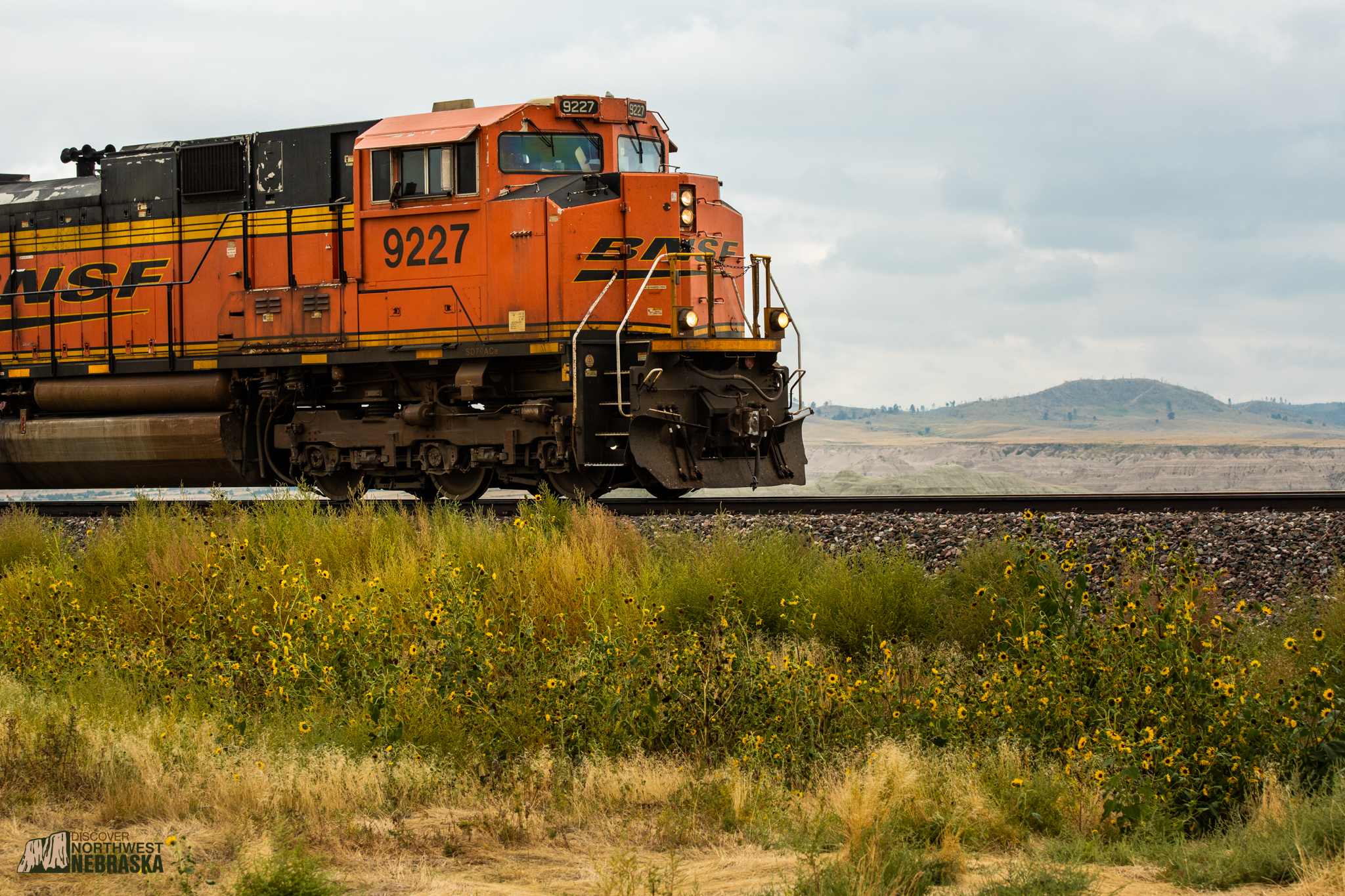
Fort Robinson & the Railroad
The Fremont, Elkhorn and Missouri Valley Railroad laid what would become the famous “Cowboy Line” in Northwest Nebraska in the mid-1880s. The track provided direct access to Fort Robinson, leading to its growth and increasing regional importance.
German P.O.W. Camp
The P.O.W. camp at Fort Robinson operated from June of 1943 to September of 1945 and housed members of Germany’s infamous Afrika Corps.
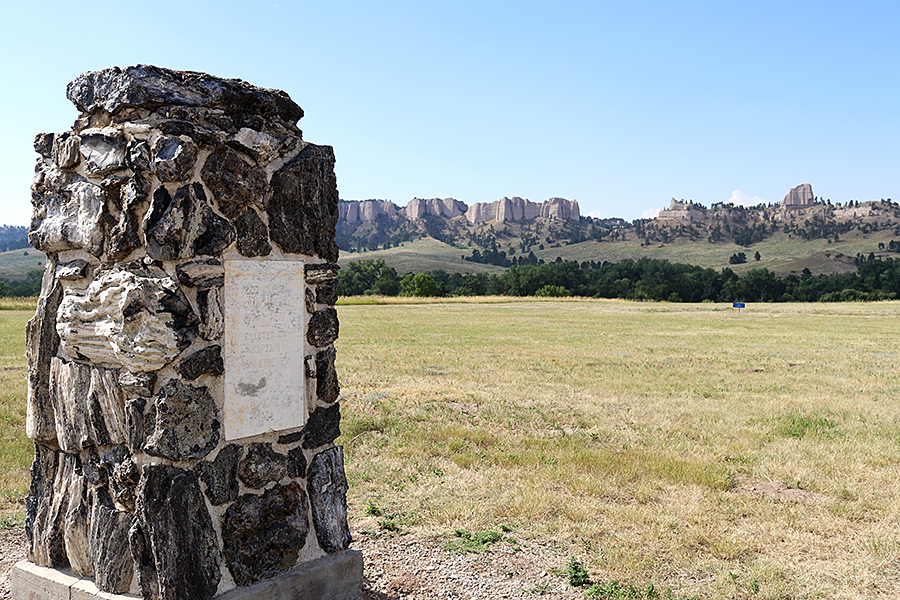
Red Cloud Agency
Established in 1873, the Red Cloud Agency served Chief Red Cloud’s Ogalala Lakota and other Native Americans of the northern plains.
Fort Robinson Cemetery
The cemetery at Fort Robinson saw its first burial in 1875 and its last in 1945 and included the resting place of Baptiste “Little Bat” Garnier and two Medal of Honor recipients.Dependents of the fort’s soldiers and workers were also laid to rest here. Most of the graves were moved when the U.S. Army abandoned the fort in 1948.
Sea Level Bench Mark
The sea level marker is one of the state’s original surveyor’s marks to establish elevation. This one was placed in 1902.
Flight of the Cheyenne
After their capture in Nebraska during their attempted escape from their reservation in Oklahoma, fleeing Cheyennes were imprisoned at Fort Robinson. Determined to travel back to their native lands, the Cheyenne once again attempted escape, battling pursuing soldiers from Fort Robinson along the way. 27 Cheyennes and five soldiers were killed in the initial fighting.
Officers' Row, 1874-1875
These quarters are the oldest original buildings at Fort Robinson. The buildings were far from extravagant and featured dirt floors and little privacy.
1887 Barracks Row
These six adobe barracks housed cavalry troopers until 1916. Each building housed one troop, 50-75 soldiers.
1909 Brick Barracks
Whether log, adobe or fired brick, 15 enlisted men’s barracks once stood at Fort Robinson. Today, only this building remains. It housed men of the 8th and 12th Cavalry and the Quartermaster Remount Service.
Officers' Row, 1909
These barracks were the last officers’ quarters built at Fort Robinson and included housing for the post commander. Now they are used to accommodate visitor’s to the state park.
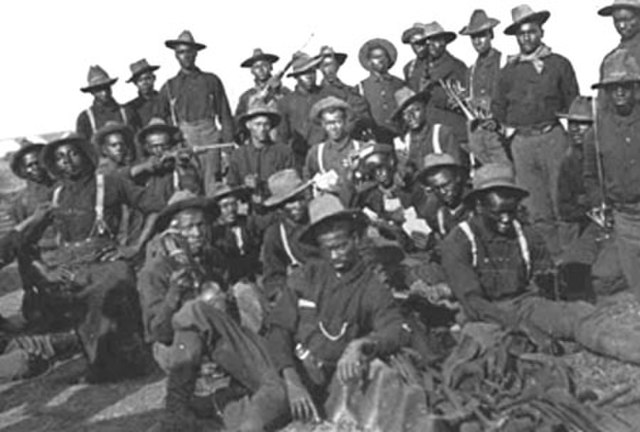
Buffalo Soldiers
The Black soldiers of the 9th and 10th Cavalry were well known for their prowess on the battlefield and played a significant role in the history of Northwest Nebraska. The men were nicknamed “Buffalo Soldiers” by Native Americans of the plains.
Adobe Officers' Quarters
Built in 1887, these quarters provided officers and their families with relatively modern living spaces, complete with running water. The buildings have been restored to represent their original form.

Post Headquarters, 1905
This building housed the Post Commander’s office as well as other administrative offices after its creation in 1905. Parties and balls were also held here. Today, the building houses the Fort Robinson Museum.
This building housed the Post Commander’s office as well as other administrative offices after its creation in 1905. Parties and balls were also held here. Today, the building houses the Fort Robinson Museum.
Flagstaff, 1890
The Fort Robinson flagstaff has a history of misfortune and was relocated to its current location after being ruined by runaway mules in 1930. The first flag over Fort Robinson was hoisted in 1876,

Fighting in the Buttes
After escaping Fort Robinson, Dull Knife’s Cheyenne climbed the buttes and fought a running battle in their bid for freedom. Marker located along the Old Smiley Scenic Drive west of Fort Robinson.

Cheyenne Outbreak
Dull Knife’s Cheyenne broke out of Fort Robinson Jan. 9, 1879, and engaged troops in a running battle before scaling the cliffs to escape.

Harrison
This village was originally established in 1884 as a railroad camp called Summit because of the town’s elevation. At 4,876 feet, it’s the highest town in Nebraska. Marker is located on the east side of the village along Highway 20.
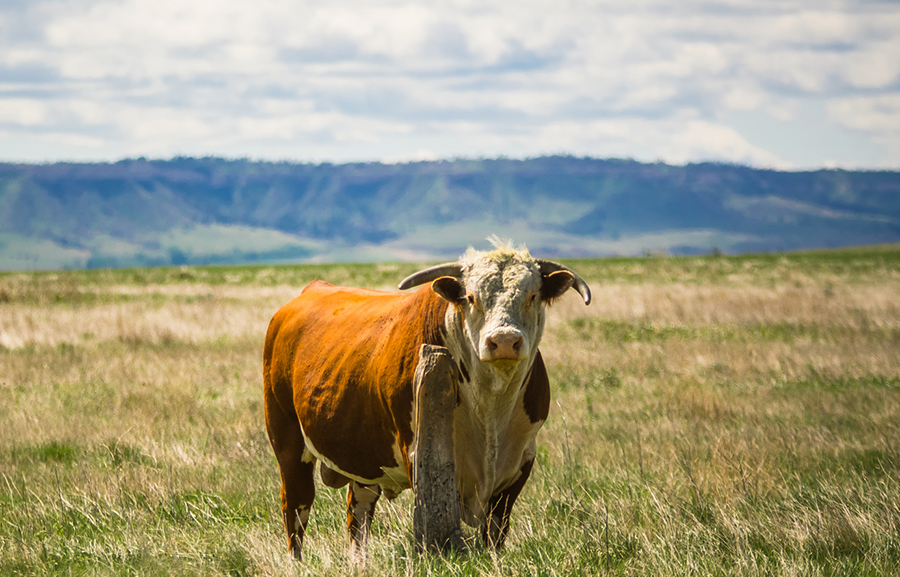
Coffee Siding
Cattle ranching was king in Northwest Nebraska, and Charles Coffee constructed a railroad siding at this location west of Harrison on Highway 20 to ship cattle to Chicago and avoid more expensive freight charges in Wyoming.
Fort Laramie-Fort Robinson Trail
This trail helped supply outposts at Camp Robison and Camp Sheridan. Located south of Harrison on Highway 29.
